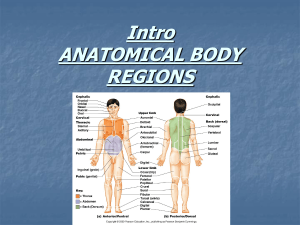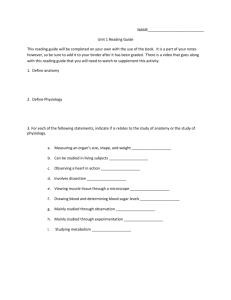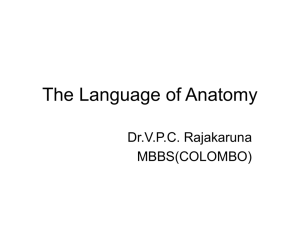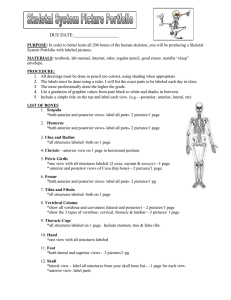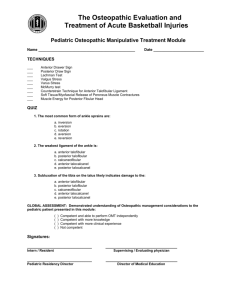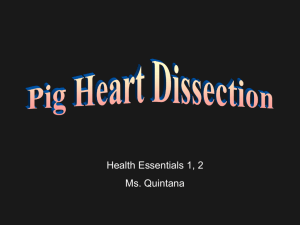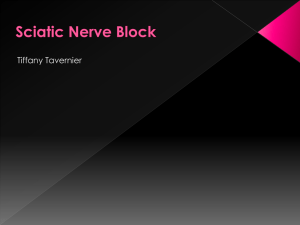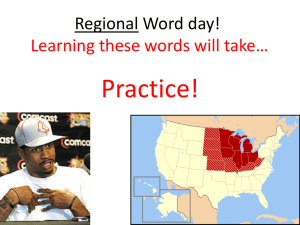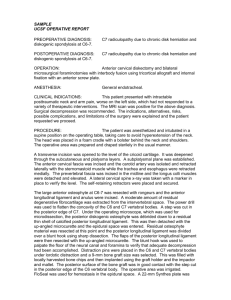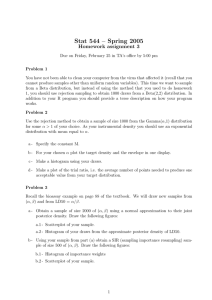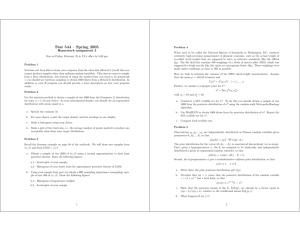Nerve Blocks
advertisement
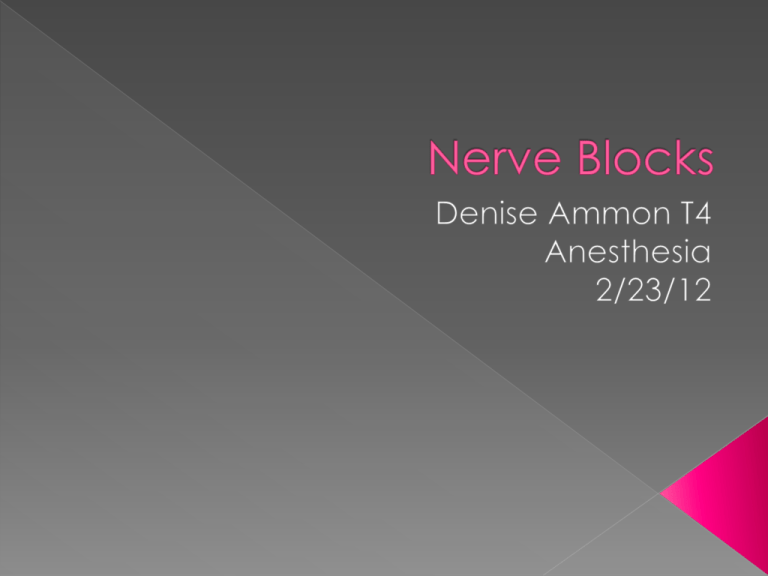
Union of the anterior primary divisions of C5-8 and the T1 nerve. › C4 and T2 may contribute as well. Roots Trunks Divisions Cords Terminal nerves (branches). “Robert Taylor Drinks Cold Beer”. Terminal Branches: Axillary, Radial, Median, Musculocutaneous, and Ulnar. “ARM MU”. Performed at the C6 level (cricoid cartilage level). › Ask patient to turn head to side. › Locate groove. Between the anterior and middle scalene muscles. › The anterior scalene is an important landmark that should be identified. Posterior to the posterior aspect of the SCM at the level of the cricoid. Enter behind the External Jugular at 45 degrees caudad and posterior. Needle enters 1.2cm above the middle of the clavicle. Administer anesthetic while advancing needle towards the first rib. › Anterior-posterior direction until parasthesias are elicited. L4-5 and S1-3 › Runs between the ischial spine and greater trochanter of the femur. › Becomes superficial at the base of the gluteus maximus. Cutaneous innervation to posterior thigh and all of the leg below the knee minus a small medial strip. Two approaches: Posterior and Anterior. Usually block is combined with femoral, obturator, or lateral fem cutaneous nerve blocks. Disadvantages: technically difficult, painful, possible hematoma, nerve damage, slight drop in BP due to blood pooling. Lateral decub position with leg to be blocked flexed at the knee with the heel resting on the opposite knee. Connect the posterior superior iliac spine with the greater trochanter with a drawing pen. Bisect this line perpendicularly, extending caudal. Needle entry point: 3cm downward from the perpendicular line. Supine position. Line from ASIS to pubic tubercle. Mark point 2/3 of the way. Draw parallel line from greater trochanter. From point of first line, continue down to second line. Inject at this site until bone is hit, then direct medially.
